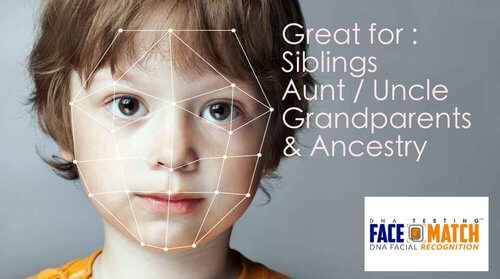Paternity Face Matching
Determines whether a genetic relationship exists by comparing the kid’s appearance and the purported father’s facial traits. Contrasts inherited features such as the dimensions of the face, forehead ridge, jawline, nose, eye area, and facial geometries.
Grand Parent Face Matching
A grandparent DNA test provides information you need if you have doubts about your biological link with your purported grandchild by taking a Face DNA test online with the help of the Face DNA application by uploading pictures.
Sibling Face Matching
Sibling testing provides a decent accuracy rate in determining the possibility of a full and half-sibling association for those who think they have the same parent or parents.
Ancestry Face Matching
Uses landmarks and photographed facial characteristics by utilizing a Face DNA test online to match individuals to possible relatives, such as great-grandparents, hoping to find shared heritage.
Aunt/Uncle Face Matching
This method uses facial traits such as cheekbone structure, eyebrow, forehead structure, jaw dimension, and facial proportions to compare nieces and nephews to purported aunts and uncles.
Cousin Face Matching:
The process predicts familial ties by comparing face features such as eye spacing, lip shape, jawline, and other facial characteristics among cousins or alleged cousins.
The Face DNA app maps face features and structure using the sophisticated EDFPC (Electronic DNA face Point Connectivity) technology. It looks for similarities in inherited qualities between users and infers genetic links by scanning features and face symmetry.
Which Online DNA Test is Best?
Online paternity tests may be the most accurate and helpful type of DNA test online. This is because around 50% of our DNA is handed down by each parent, meaning that a parent and child share a sizable amount of distinguishable DNA. In addition to DNA, our parents give us most of the facial traits and body parts we possess. By looking for commonalities in features, including eye shape and color, nose shape, the structure of bones, and other DNA-inherited facial anatomy, sophisticated facial recognition algorithms may reliably determine paternity. Comparing observable qualities can be done even with older photographs. The software uses a high degree of precision to objectively determine parenthood by comparing the distinctive facial mapping of the kid to the possible father.











